Middle Ages may boast a great variety of body protection. And probably, brigandine is one of the most known medieval armor. There are dozen of models, which had various design, plates' layout and materials for outer and inner shells.
This article is concerned with fabrics and materials, which medieval artisans were using for manufacture of such a perfect body protection.
XIV century became an epoch of experiments in armour designing. Jacket with riveted metal plates also known as brigandine got widespread use just in this time. It replaced mail and lamellar body protection and became very popular type of armour during few centuries.
You may read about history and origin of brigandine in this article.
Today, we will review materials, which were used for outer layer of brigandines.
Archaeology and history
There was a problem with brigandines’ investigation because of very few samples, which were extant in original appearance until present days.
Time does not have mercy on fabric, so archaeologists usually find just sets of rusted plates that help to reconstruct layout and shape of armour.
There is a look of brigandines during excavations:
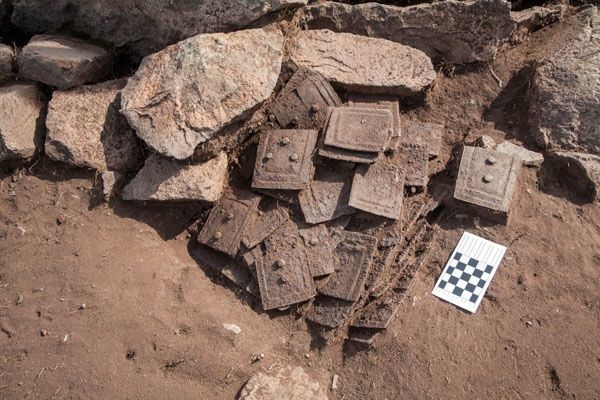
Of course, it is not possible to define exactly, what base was used for plates’ riveting, as centuries passed. There are many images of brigandines in literature, statues, reliefs and gravestones. And, despite of not giving meaningful data, they make overall picture clearer.

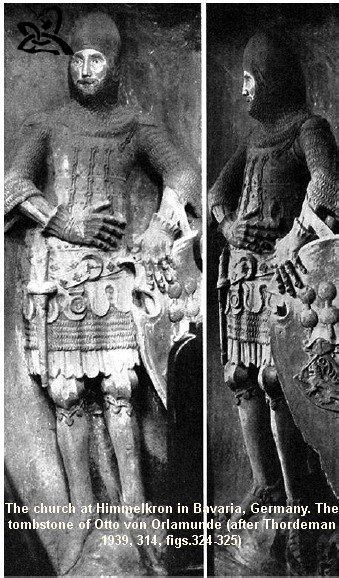
The tombstone of Otto von Orlamunde, Bavaria
Originals and reconstructions
Armour from museums and private collections are the most interesting for us. We make our reconstructions basing on these samples.
These materials are used for brigandines’ manufacture most often:
-
Leather. Firm and reliable material that protects against moisture and provides with long service life of armour. Leather is perfect as for battle, so for a parade.
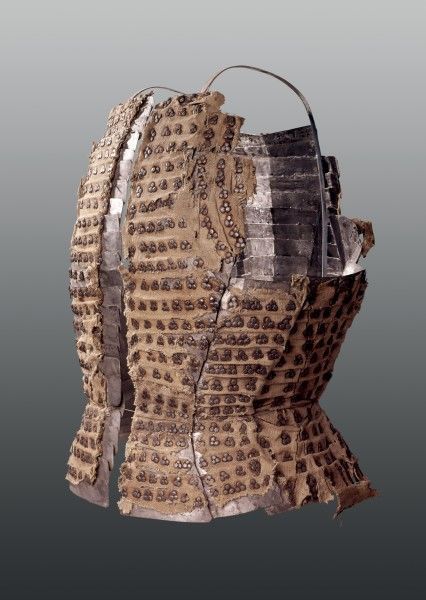
Armour of Charles the Bold, Duke of Burgundy. Basel Historical Museum, Switzerland
And here is our model of well-known Mongolian armour Khatangu degel with leather outer layer:
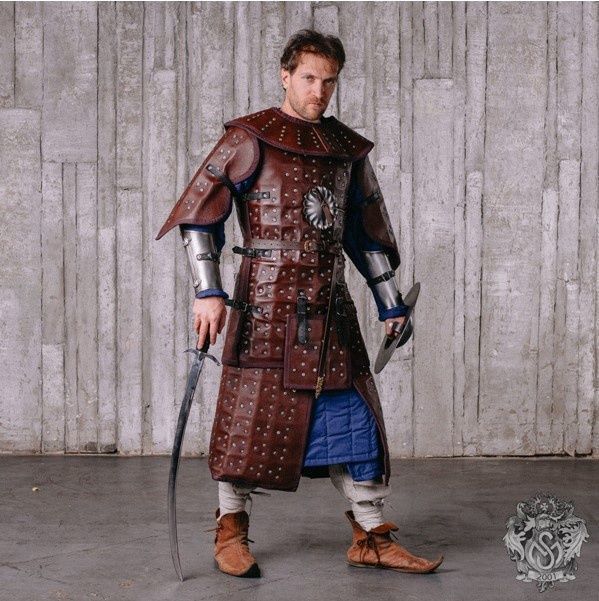
Khatangu Degel by Steel Mastery -
Linen. This affordable and hardwearing material was used for manufacture of armour for common infantrymen. Price of linen was not high, and it could be replaced in case of going bad. Many brigandines had linen base.
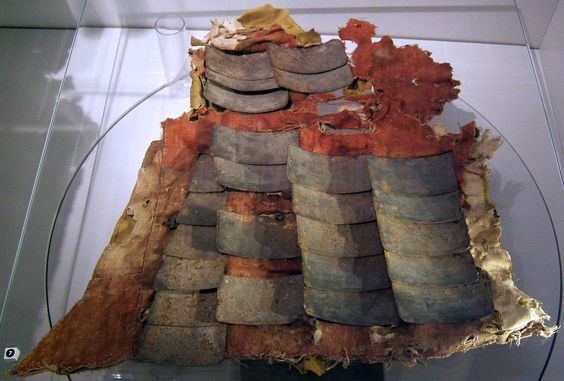
Armor plates from a brigandine, 15th century, Castel Tirolo/Schloss Tirol, Italy
Also, we often use cotton for reconstruction. This material is rather similar to linen for its qualities.
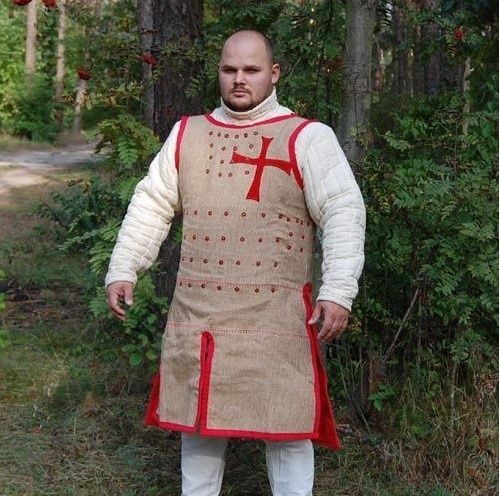
Woolen European brigandine by Steel Mastery
-
Wool. There is traditional fabric of medieval Europe. Woolen fabrics were being manufactured even often than linen one, as linen did not grow in sufficient quantity in frigid climate of medieval Europe. Because of it, brigandines with wool base are quite common models.
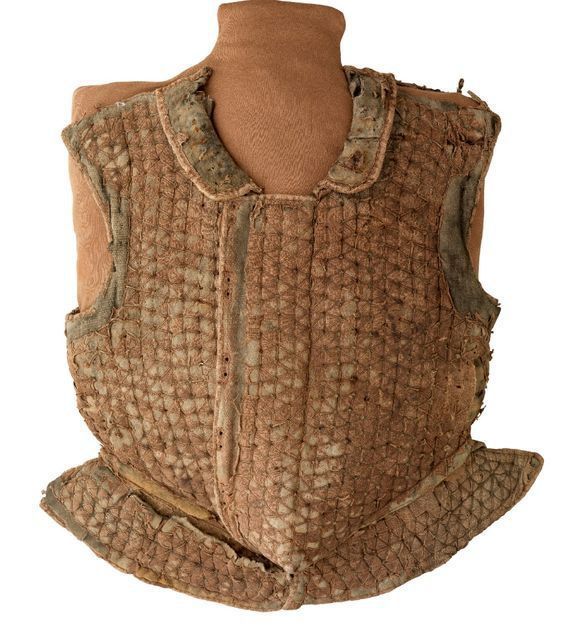
Jack of plate. Jerkin with sewn plates is similar to late small-plates brigandines, but it does not require riveting. Dated by 1560 year, Royal Armouries Museum, Leeds, UK
-
Suede. There is a reverse of leather, and it combines durability and perfect outer look. It’s not surprising that suede was highly appreciated in the Middle Ages. Brigandine with suede base looks incredible!
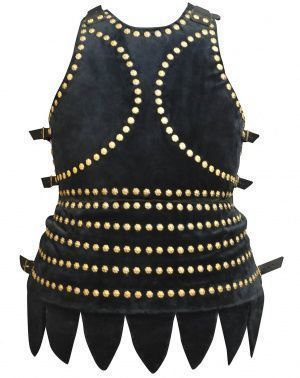
Reconstruction of brigandine from Munich by Steel Mastery
-
Velvet is a fabric of noblemen and lords. And, armour did have to correspond everyday clothing. Goldwork, fancy brass rivets and high-quality fabrics were being used for such suits.
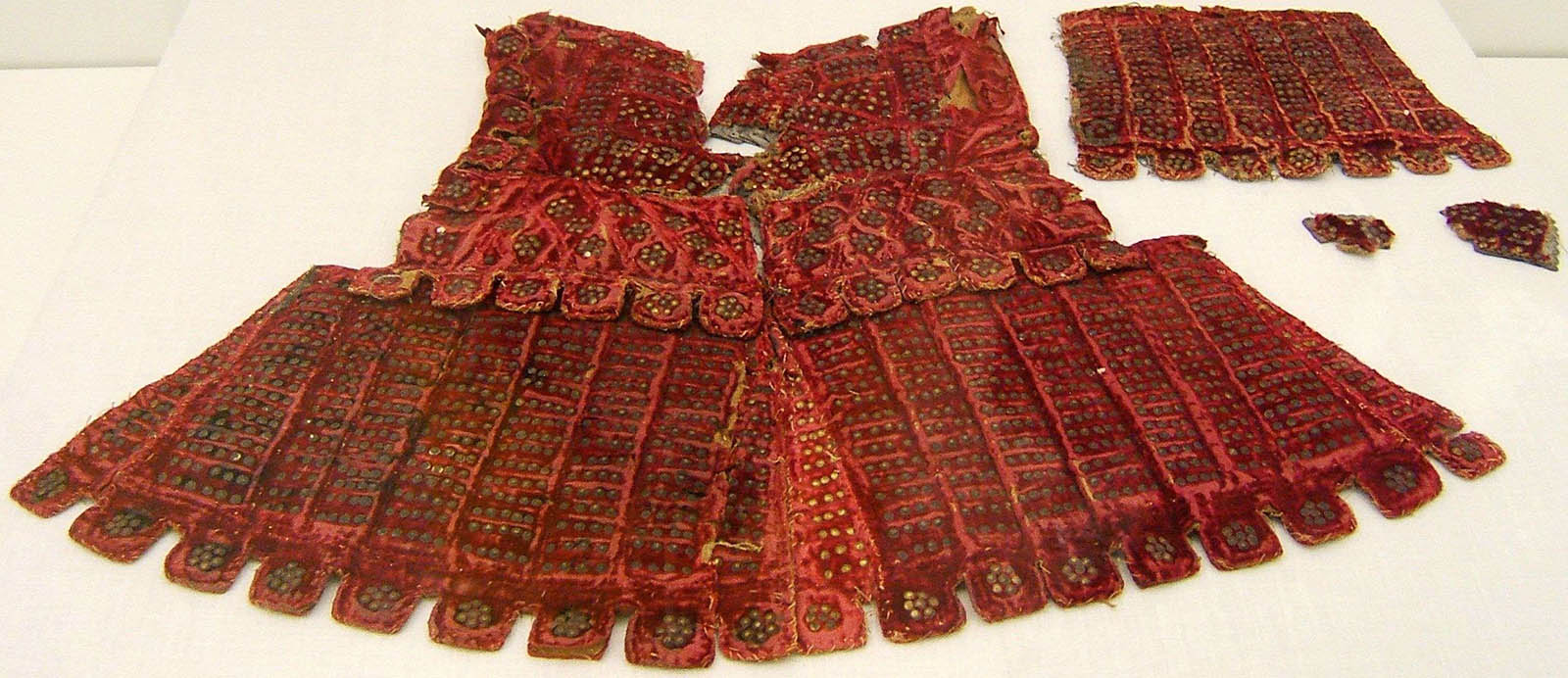
Brigandine suit, XV-XVI centuries. Army Museum of Toledo, Alcázar, Spain
By customer wish, we can use velour, which has properties similar to velvet, but for lower price.
You may order the most popular brigandines from us. There are European, Slavic and Eastern models with possibility to choose material and fittings. You can see all models of brigandines here.
Also we have brigandine protection for hands, arms and legs.
If you don't know what type of protection you need (brigandine, metal or maybe padded) you can see all items which will fit for some part of body: head, body, arms, hands, legs and foots.
Do not hesitate to contact us if you have any questions!


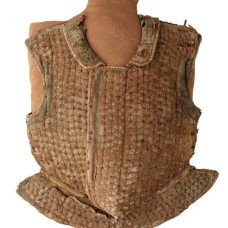

0 Comentarios
Steel-mastery.com